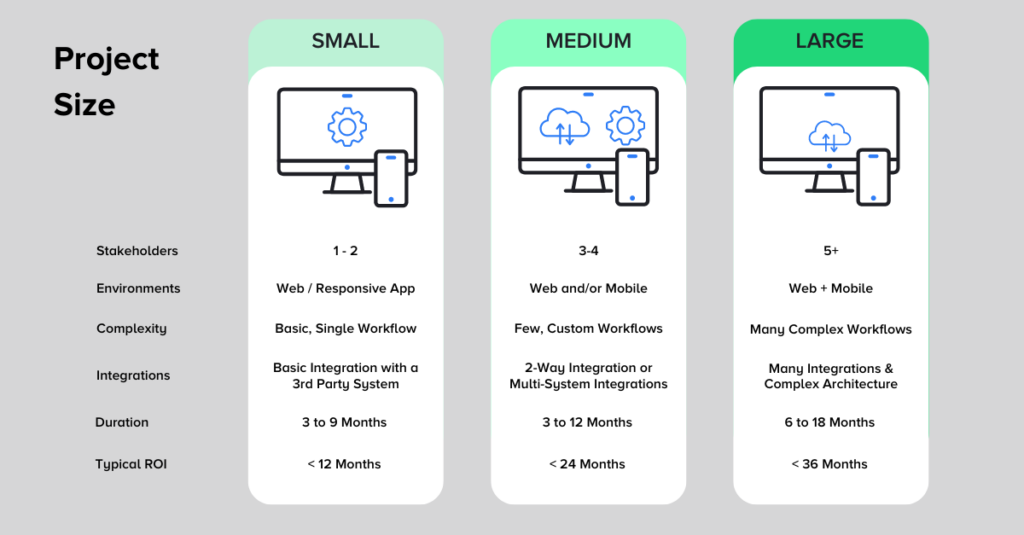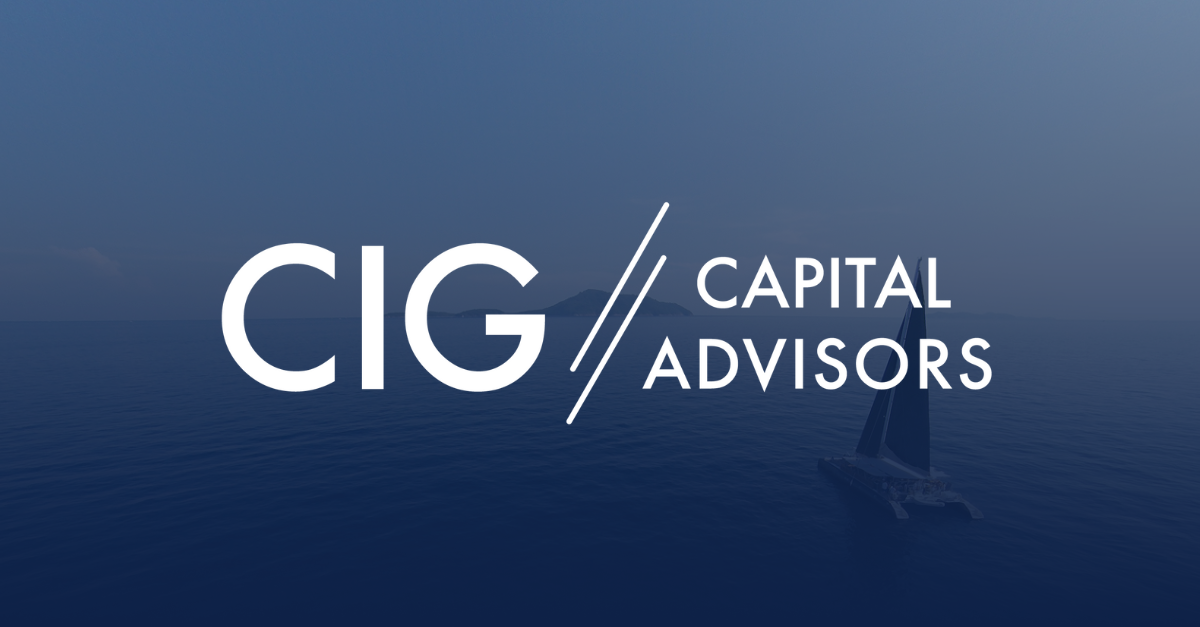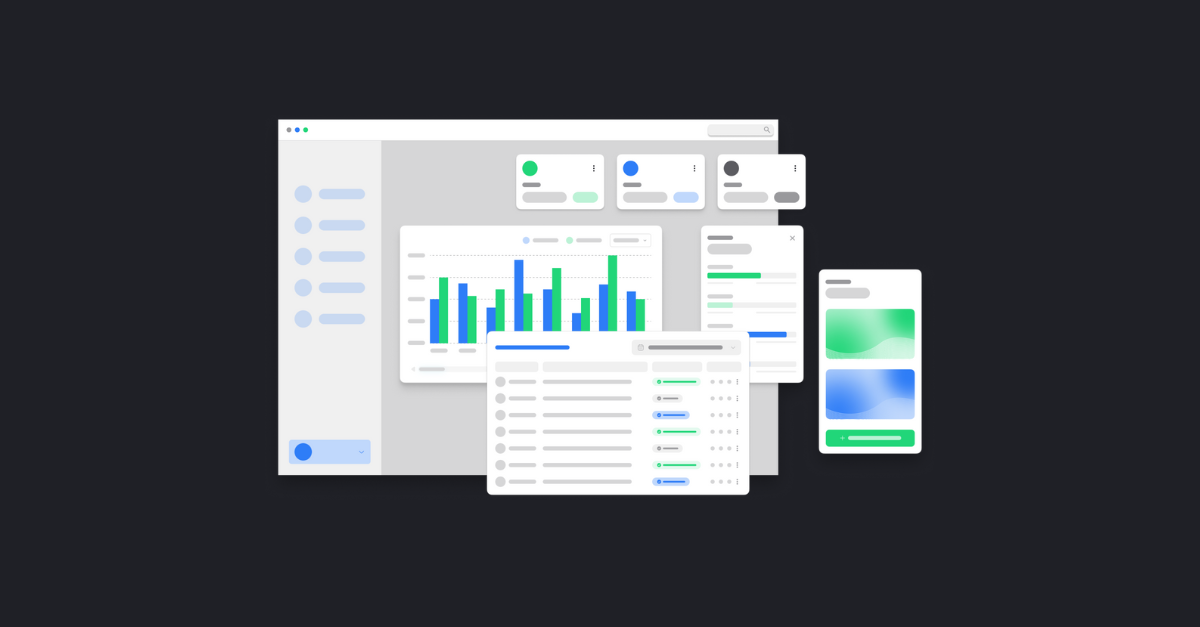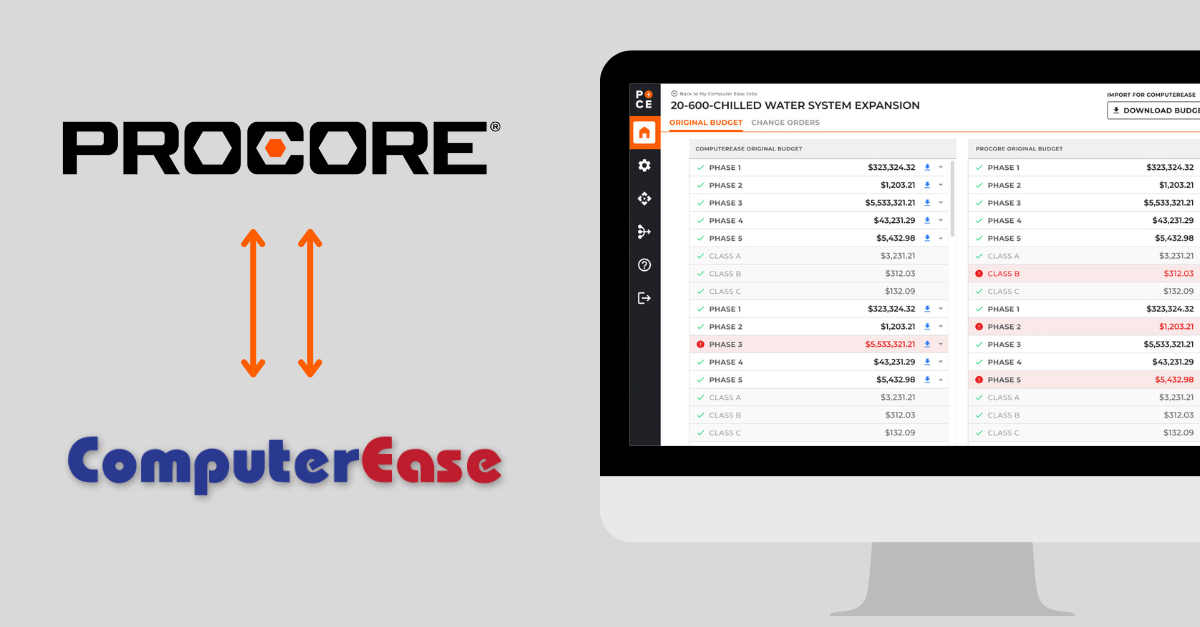So, what is this custom software project going to cost?
One of the more frustrating (and confusing) aspects of developing custom software can be determining the overall cost of your project.
Some firms might quote you $5,000 for a mobile app while another firm quotes $150,000. But which one is more accurate?
Others are wary of working with software firms because they’ve been burned in the past – projects that were estimated at $50,000 end up costing $100,000+ with several surprise invoices along the way.
While it’s true that the total cost of custom software “will depend” from project to project – that answer doesn’t really help anyone. You want to know what YOUR project will cost (and why).
So, I want to shed light on how a firm’s processes determine the accuracy of an estimate for the cost of custom software development. I hope this knowledge informs your future buying decisions and what software firms you decide to work with.
Starting with a Ballpark Estimate
During the sales process with a potential client, I always discuss a ballpark estimate as soon as possible. I don’t want to waste a client’s time or mine. Establishing a price range gives clients a general idea of the total cost of software development to see if it aligns with their expectations and budget.
To arrive at an informed ballpark estimate, there are various factors to consider:
1. Past Projects Done by our Firm
We analyze past projects with similar functionality and reference the effort level required to complete a similar project. (Since we’ve worked on hundreds of projects at SPARK, we have an extensive backlog of projects to compare from).
2. Complexity of the Project
We ask the right questions during the sales process to understand the intricacies and details of the project. I’m looking for certain software complexities that will increase costs such as mobile functionality and system integrations.
3. Mobile Functionality
Functionality like a dedicated mobile app or offline accessibility should be identified early as features that will increase costs.
4. System Integrations
The number of integrations needed and the type of integration, such as via an API or other methods, can add complexity, cost, and time to your project.
5. Use of Off-the-Shelf Software
Can we utilize off-the-shelf software for any components of the potential software? If so, this could help lower the total cost since we wouldn’t need to build all the functionality from scratch. Learn more about how to compare the costs of off-shelf-software versus custom software.
Here is how different functionality can determine the size of your project:

What about low-ball estimates?
One of the biggest complaints about custom software services is the range in costs. One firm might tell you they can build a mobile app for $5,000, while another firm tells you it will cost $150,000.
Why does this happen? Most often, I see low-ball estimates come from firms that provide more “transactional” relationships. They provide an estimate quickly without digging into the project requirements and understanding the scope.
For that reason, I tell clients to be wary of trusting firms that provide prices that can seem “too good to be true.” You risk working with a firm that can’t truly build what you want…or you may end up with surprise costs and delays down the line.
It’s crucial to partner with a firm that takes the time to thoroughly understand the project, ask the right questions, and provide an estimate that reflects the true complexity and effort required.
To ensure that type of experience, SPARK starts all our custom software projects with a Strategy and Planning Phase.
Strategy and Planning Phase: From Ballpark Estimate to Project Roadmap
When I provide a ballpark estimate during the sales process, it’s just a starting point and provides a range of what your project could cost. The best way to hone in on a more accurate estimate though is to take a deep dive into the actual requirements of the proposed software.
Similar to when building a $400,000 home, you don’t skip the architecture stage before starting construction. You would create a blueprint that tells you how big the rooms should be, where they should go, and what materials to use.
If you skip the architecture stage, you’re likely to run into serious issues during construction or risk not getting what you want.
What Happens During the Strategy & Planning Phase
Think of a Strategy and Planning phase as creating a blueprint for your software project. Your project stakeholders work with SPARK’s project managers, UX/UI designers, and software developers to start to map out the different features of your platform and the technology options available.
The purpose of the Strategy and Planning phase is to provide a more informed cost estimate, refine project scope, and reduce the risk of unexpected expenses.
Here are the steps that SPARK takes during this phase:
1. Define Business Goals
We collaborate closely with the client’s key stakeholders to identify and define the project goals and desired outcomes. Doing so sets a solid foundation for the rest of the project.
2. Document Business Workflows
We analyze and map out the business workflows associated with the software project. This step involves identifying different user roles and their specific tasks and interactions with the system. By understanding these workflows, our team can determine and prioritize the right functionality that will impact the business.
3. Create Wireframes
Our design team creates wireframes that reflect how the software application would function. Learn more about the different types of software prototypes that you can build at this stage.
4. Define System Architecture
During this phase, we evaluate different technology and infrastructure options, while looking for any potential roadblocks or contingencies. We provide a diagram that shows what the infrastructure would be to support the functionality you want.
5. Deliver Project Roadmap
At the end, we deliver a comprehensive project roadmap that tells the client what to build and how. It outlines the project milestones, timeline, and budget breakdown.
Making Cost Decisions During the Strategy & Planning Phase
Scope, budget, and timeline are always competing factors during a software project and therefore need to be balanced. During the Strategy and Planning phase, clients should define the order of importance between these three to make better decisions around costs.
For example, if you have a set budget, then you may need to reduce your scope to stay under a certain dollar amount and ensure ROI.
On the other hand, if your scope is the most important factor, then you may need to be flexible with your timeline and budget. You might need to pay more for must-have functionality, no matter how complex it is.
Throughout this entire Strategy and Planning phase, we work with clients to prioritize features and functionalities that align with the available budget. This ensures that the project remains financially feasible without compromising on its core objective.
Get a Ballpark Estimate from SPARK
The main takeaway here? By nature, the total cost of a custom software project is unique to what’s being built and how. Getting an accurate estimate comes down to working with a software development partner that takes you through a transparent process to build your estimate based on understanding the actual scope of the project.
If you’re considering building custom software and need to figure out costs, a good first step is to talk to someone about your project and get a ballpark estimate.
I’m happy to do that for you. Reach out to me today here or chat with me directly on this page.




